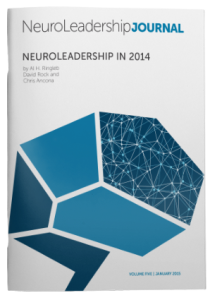Project Description
By AL H. RINGLEB, DAVID ROCK & CHRIS ANCONA
Every year seems to bring greater interest in the human brain. Recently, both Europe and the United States announced major brain-mapping projects, a significant indication of the growing appreciation of the benefits likely to flow from accelerating its study. Both projects share the intention to “fill the gap in our knowledge of brain activity at the circuit level
As in past issues of the NeuroLeadership Journal, the intent of this article is to assist practitioners in reflecting upon recent neuroscience and social psychology research and thinking trends relevant to NeuroLeadership. First, in continuing past traditions, we will begin by taking a look at some of the most interesting trends and issues that seem most likely to affect NeuroLeadership’s future and direction. Then, as in the past, we will categorize the research based on the four domains set out in the initial Journal (Ringleb & Rock, 2008): 1) Decision Making and Problem Solving, 2) Emotion Regulation, 3) Collaborating With and Influencing Others, and 4) Facilitating Change. In selecting research for inclusion, the following basic criteria were followed to the extent possible: Significance to the field of NeuroLeadership, likelihood of significantly expanding or creating research linkages between neuroscience and the practices of leadership and leadership development, impacts on current thinking as driven by social science research, and, perhaps most importantly, relevance to the interests of practitioners in this growing field.
* These papers are included with individual, corporate, and student memberships. Click here to become a NeuroLeadership Institute member. Already a member? Visit our membership portal.
